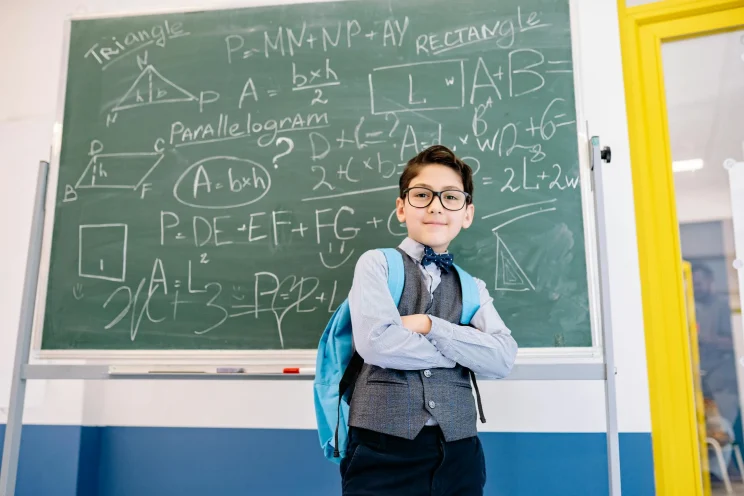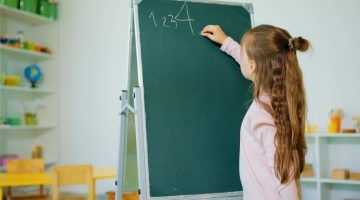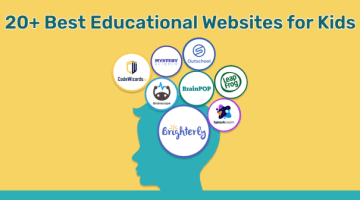Math Skills for 2nd Grade: How to Help 2nd Graders with Math?
reviewed by Camille Ira B. Mendoza
Updated on March 26, 2025
A 2nd grader struggling with math isn’t an unfamiliar situation to most parents as 2nd-grade math introduces the lifelong journey of counting and drawing math figures. And as a parent, you probably can’t keep yourself from googling: how to help my 2nd grader with math? The truth is mathematics for 7-8-year-old kids isn’t that complicated. All you need to do is have the right resources and strategies at hand to help your kid conquer stress-free math.
In this article, we’ll walk you through the second grade math skills checklist, tips on how to help your 2nd grader with math, and where you can find fun interactive math lessons for elementary school kids.
What do 2nd graders learn in math?
2nd graders begin to learn key math concepts and skills that will serve as the base for their future math knowledge. Second grade math concepts include counting patterns, drawing math figures, problem-solving skills, and critical thinking.
The abovementioned second grade math skills can only be attained after finishing the first-grade math program. Naturally, not having learned the key skills during each grade will interfere with a kid’s ability to understand math in the future, so don’t underestimate the importance of elementary school math.
Improve your 2nd grade kid math skills today with Brighterly!
Brighterly, a math tutoring platform takes time to assess each kid’s math needs, understanding, and goals in order to build a comprehensive individual curriculum that is fully aligned with the US Common Core.
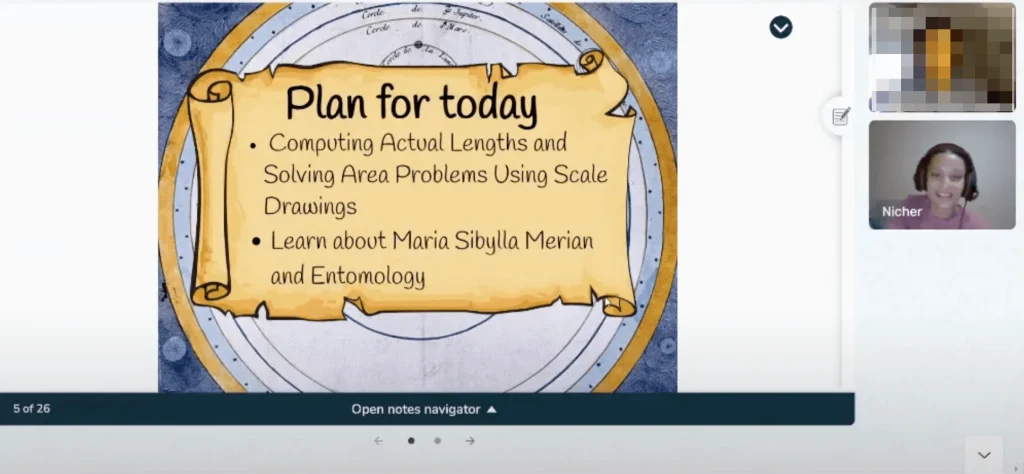
Second grade math skills with Brighterly Math tutors are strengthened through engaging, interactive one-on-one sessions that focus on building a solid foundation in concepts like addition, subtraction, place value, and basic geometry.
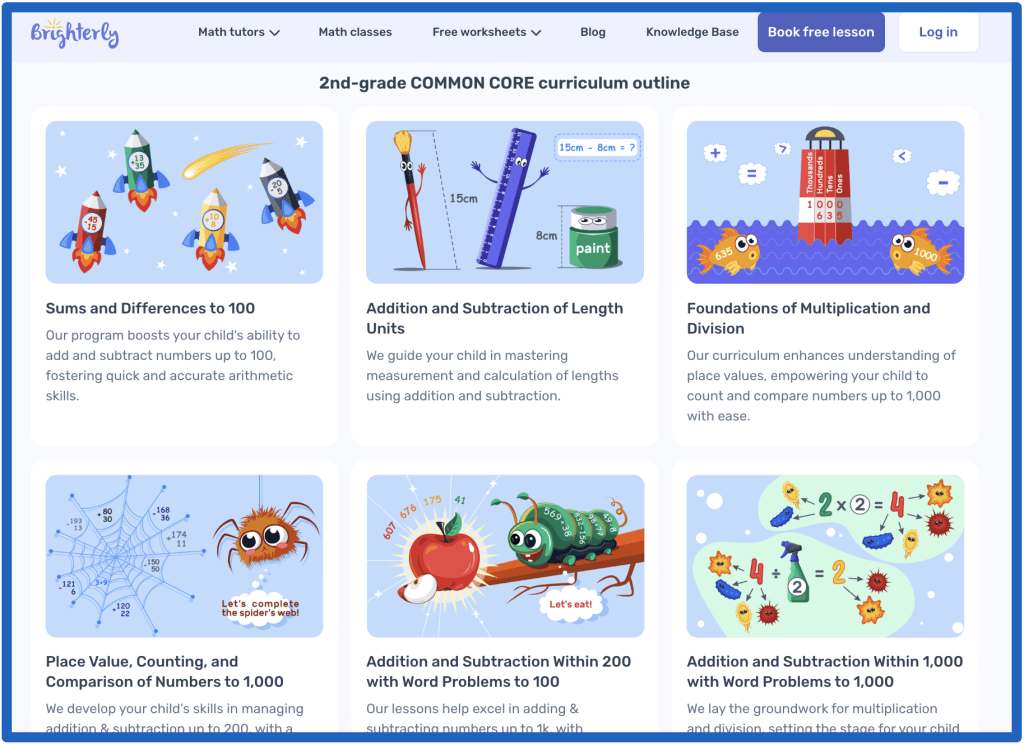
In addition, you get regular progress reports that highlight the topics covered, progress made, and areas for improvement.
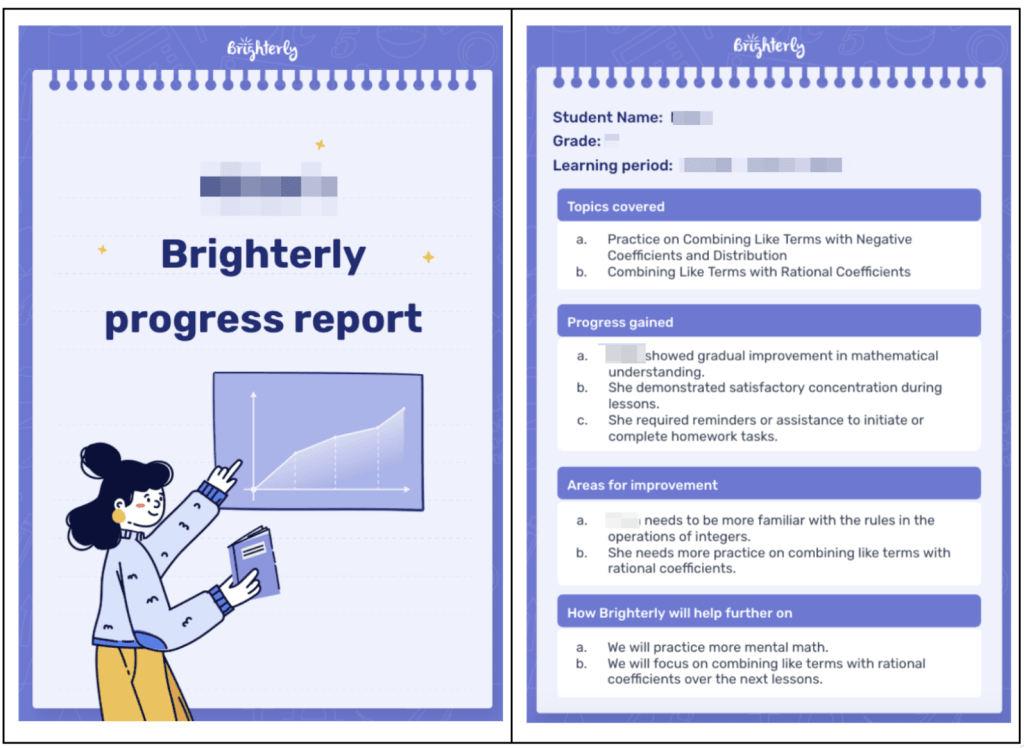
This way, parents have clear insights into their kid’s academic performance during a specific time period.
2nd grade math skills checklist
Note: Teaching 2nd grade math includes core skills that students have to obtain after completing the second grade math program. As you can see, analyzing, creating geometric shapes, and solving daily tasks and homework are necessary skills for every second grader.
Let’s investigate each of these skills in detail below!
Analyzing abilities
Critical thinking and problem-solving skills are the core skills in this block. Children learn how to deal with math problems, including globalizing and coping. They begin to analyze diagrams and bar charts, learn how to compare numbers, add and subtract numbers, and apply length, weight, and capacity units in everyday life.
Creating geometric shapes
2nd grade math is the time when visualization skills are developed by drawing math figures like squares, triangles, circles, and rectangles. Children learn how to divide the shapes into equal parts and small pieces and analyze the ratio.
Solving daily tasks
Key 2nd-grade math concepts also involve solving daily tasks. This particular skill is related to counting money: additions and subtractions, understanding three-digit numbers, and calculations up to a thousand.
What math should a 2nd grader know?
- Calculation of at least 1000
- Place value understanding
- Comparing numbers
- Add and subtract up to 1000
- Measurement units
- Telling the time
- Money transactions
- Bar charts visualization
Note: These 2nd grade math topics help your kid develop eight core skills to be able to tackle more complex concepts of math in 3rd and 4th grade and middle school.
Below is the breakdown of the 8 most significant 2nd-grade math concepts.
8 most significant 2nd grade math concepts
Second grade math topic #1: Calculation of at least 1000
Math concepts for 2nd grade involve not only having numbers sense but also counting quickly by ones, fives, tens, and hundreds up to one thousand. Future assignments, formulas, and patterns for the 3rd grade and above would be unattainable if children have a vague understanding of calculation.
Second grade math topic #2: Place value understanding
Place value understanding is another 2nd-grade math concept that helps children understand that the number of digits is meaningful and indicates the value. For example, when counting money, kids understand what stands for each digit in the number 671. This awareness of 3-digit numbers is compulsory in 2nd grade, while the awareness of 4-digit or 5-digit numbers is not required.
Second grade math topic #3: Comparing numbers
The ability to compare numbers is one of the key math skills for 2nd grade and directly influences children’s mathematics progress. Learning the comparison of numbers up to 4 digits, using the signs <,>, and =, is what kids learn in the 2nd-grade math class. This skill lies within the pre-algebra realm.
Second grade math topic #4: Add and subtract up to 1000
Strong arithmetic skills in adding and subtracting numbers to 100 are something that every 2nd grader should know. Next, they learn how to count 3-digit numbers. As a result, children should add and subtract up to 1000 automatically without help. 2nd grade math skills like this prepare students for patterns with proportions and formulas in the next grades.
Second grade math topic #5: Measurement units
Understanding and knowledge of the measurement mechanisms, units, and types is another part of the 2nd-grade math curriculum. Children get to know basic weight, height, and length units. Through this second-grade math concept, kids learn how and where they can use units of measurement like pounds, liters, centimeters, miles, and kilometers. Additionally, they obtain the ability to make comparisons of measurement units and count them up to 1000.
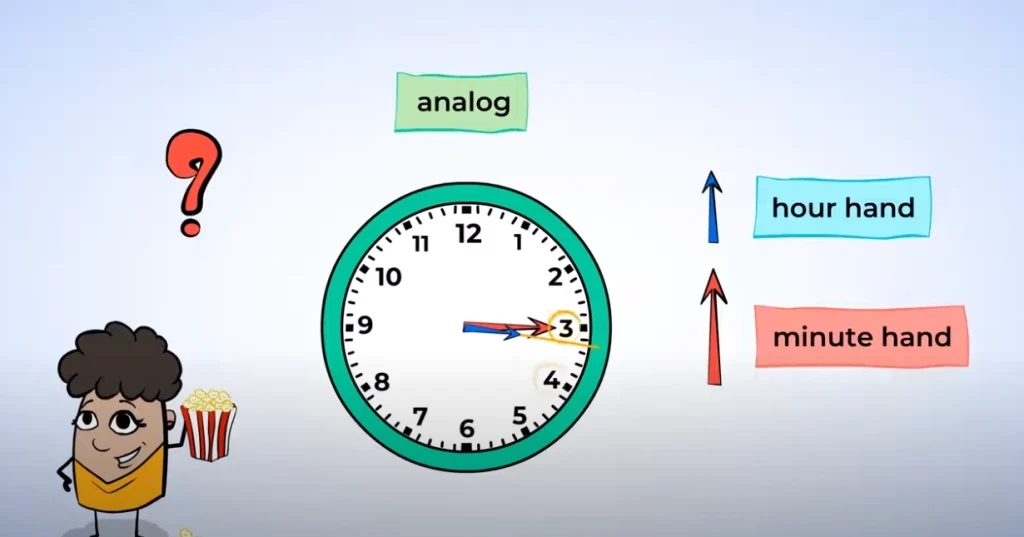
Second grade math topic #6: Telling the time
Digital and analog clocks come in handy in the 2nd grade math. Children have to learn about the time and periods of the day. This crucial concept of indicating the period of the day, telling time up to 5 minutes, and counting the period to a certain time is among the core skills in teaching second grade math.
Second grade math topic #7: Money transactions
If you think that money transaction skills aren’t exactly one of the second grade math topics, they are, in fact, considered practical applications of arithmetic and place value. Children learn to count, exchange, and solve other money-related problems.
Second grade math topic #8: Bar charts visualization
With this skill, children learn how to compare numbers. They discover how to analyze the proportion of visualized parts and make conclusions based on the pictures.
How to help your 2nd grader with these math topics using Brighterly?
Brighterly offers several ways to help your 2nd grader with basic and more complex math:
Improve your child’s 2nd-grade math skills with Brighterly Math Tutors!
2nd-grade math help requires an individualized approach, game-based learning, and one-on-one tutoring. And this is exactly what Brighterly math tutors provide your kid with. Our tutors focus on important second grade math topics that are fully aligned with the US Common Core. For example, sums and differences, addition and subtraction of length units, and foundations of multiplication.
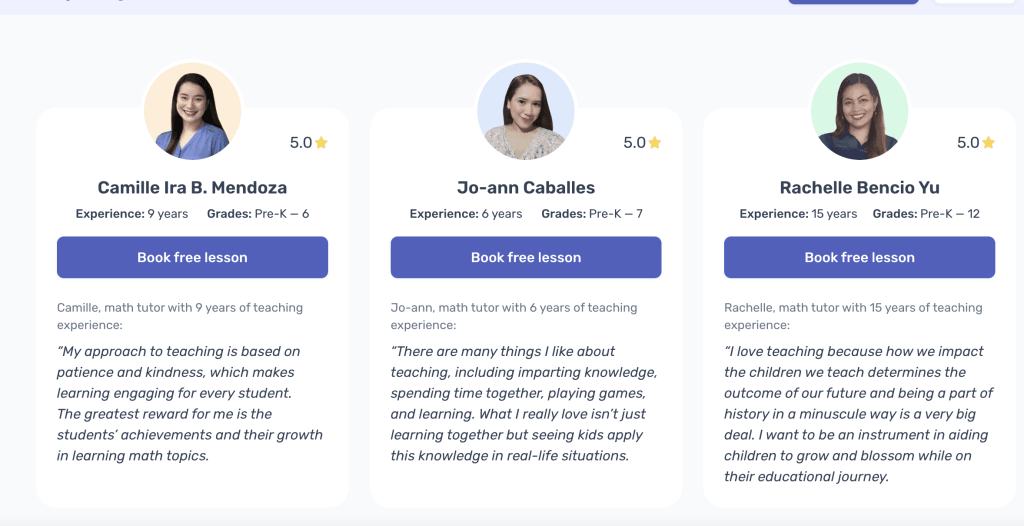
Brighterly tutors simplify mathematical ideas, adopting a practical, engaging, and entertaining approach to making kids learn. This way, math turns from being a dull experience into an interactive and memorable activity that drives excellent math skills.
Parents appreciate the quality of our services and 2nd -grade math tutors!
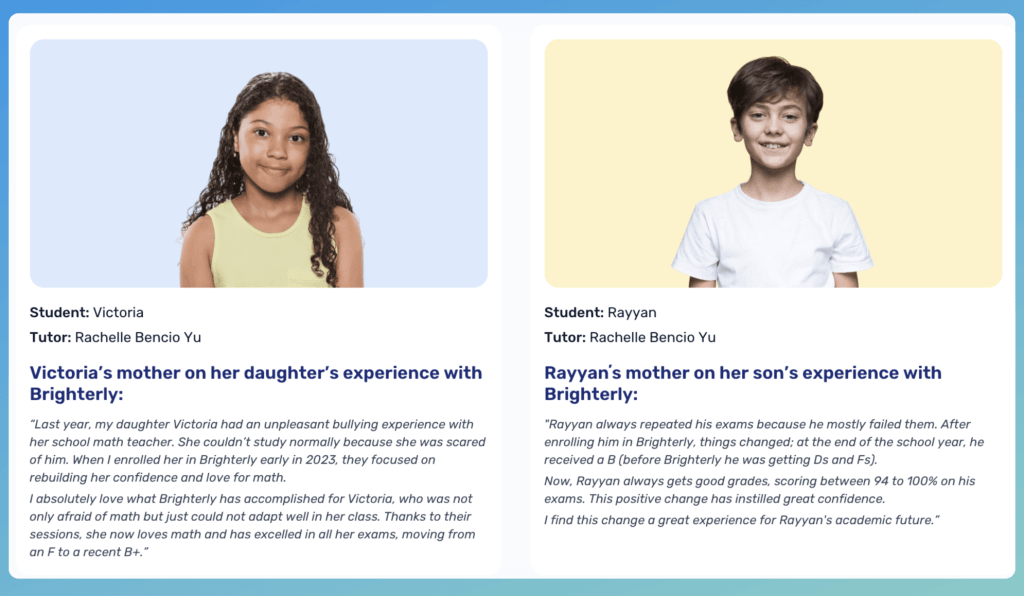
Brighterly Math program for 2nd grader struggling with math
What should a second grader know in math? Brighterly knows — with a comprehensive Brighterly math program fully aligned with the US Common Core, your kid will adopt 2nd-grade math skills as efficiently as they possibly can.
Firstly, Brighterly tutors will let your child take online math diagnostic tests for 2nd grade math. This will help tutors discover areas of strength and challenge for your youngster and draw the best curriculum tailored to their needs.
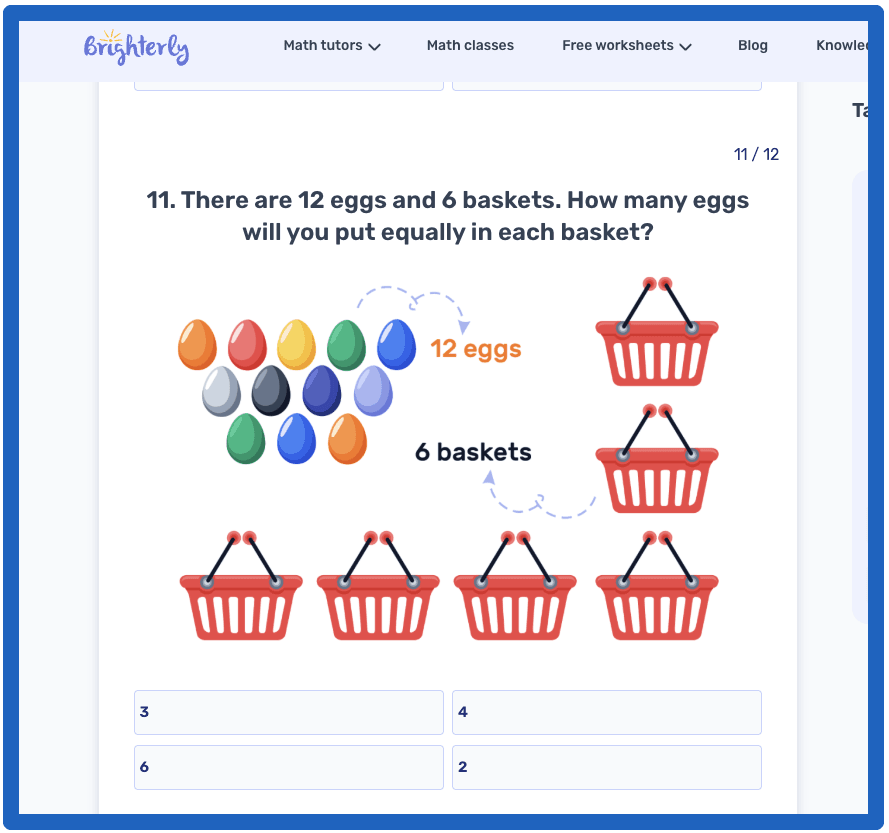
As a result, this comprehensive approach will ensure steady academic growth through regular and engaging one-on-one math lessons.
Brighterly math programs for kids cover grades 1-9 and can help them both with fundamental and advanced concepts. Every lesson is customized to each grade level and personalized according to students’ individual goals, character, and parents’ requirements.
Check Brighterly affordable pricing plans here.
2nd-grade math help via Brighterly Math worksheets
Brighterly Math worksheets are an excellent opportunity for your children to further explore math completely free of charge.
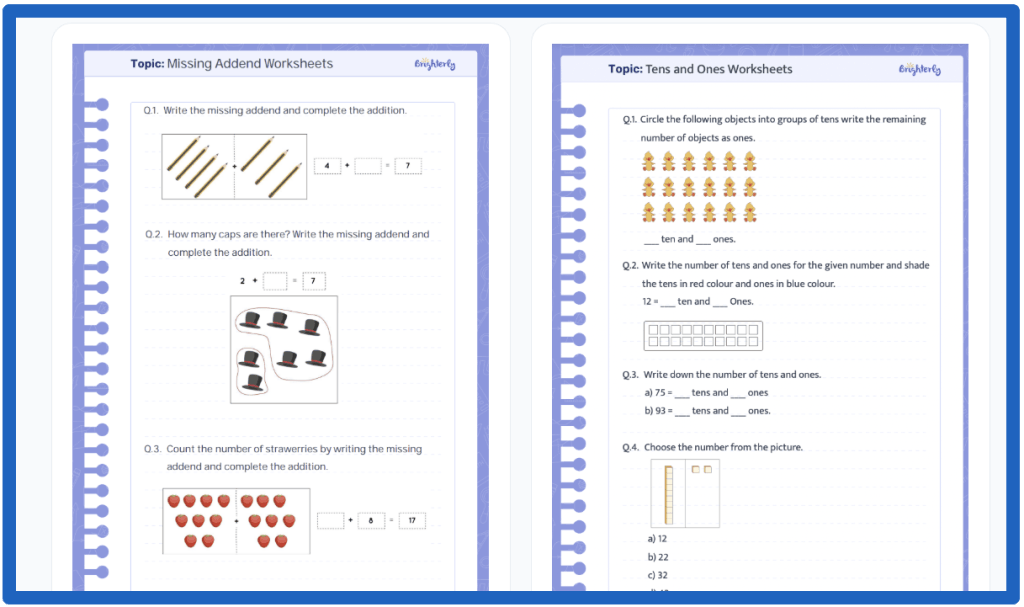
Tutors and parents can choose free printable worksheets on 2nd grade math skills to assist students in achieving their learning goals. These worksheets are specially designed with your kids in mind to help them reinforce their math skills and knowledge and achieve their goals with ease.
What do second graders learn in math?
Second-grade students learn counting, time measurements, additions and subtractions, and drawing math figures in math classes. They also use books to identify forms and patterns. However, students hardly understand math theory in 2nd grade. Teachers focus on counting, units of measurement, time, comparing three-digit numbers, and interactive methods to reinforce basic mathematical concepts for 2nd grade.
How to help 2nd grader with math?
To help 2nd graders with math, you have to make it fun, relatable, and interactive, all while building their confidence with appreciation and sincere encouragement. Here are a couple of tips that will help you with math strategies for 2nd grade.
10 Math strategies for 2nd grade
- Use hands-on tools
- Relate math to everyday scenarios
- Make math a game
- Break math problems into smaller steps
- Celebrate their effort
- Practice patterns and sequences
- Focus on problem-solving skills
- Use technology
- Review basics
- Stay positive and patient
2nd-grade math help – tip #1: Use hands-on tools
Second grade math strategies include using hands-on tools to reinforce math skills. Add objects like counters, blocks, or coins to teach addition, subtraction, and grouping in your classes. You can also encourage kids to draw pictures or use number lines to solve problems.
2nd-grade math help – tip #2: Relate math to everyday scenarios
Showing kids that math is essential in our day-to-day life is essential. For example, you can invite kids to come and cook with you to measure ingredients while cooking. Or ask them to count items during grocery shopping. Another great way how to teach 2nd grade math to your child is to use real-life scenarios like dividing treats or sharing toys to explain basic division or fractions.
By making kids realize how needful math skills are in real-life situations, students will increase their consciousness and attitude to learning.
2nd-grade math help – tip #3: Make math a game
Math-focused games work greatly with elementary school children. Incorporating games like Math Bingo and Dominoes can significantly boost your child’s overall understanding of math. You can also download math apps on your tablet or phone as an additional resource for math fun.
2nd-grade math help – tip #4: Break math problems into smaller steps
It’s important to keep in mind that in order to teach kids, you have to be patient and break things down into smaller pieces. 2nd grade math strategies involve decomposing math problems into smaller, more digestible chunks. You can also encourage them to verbalize their thought process to understand where they might struggle.
2nd-grade math help – tip #5: Celebrate their effort
Kids need to know they are in a safe space while learning math. Praise their effort by celebrating even the smallest wins, building their confidence, and letting them know they are doing great. Math skills for 2nd grade also involve encouraging a growth mindset, where making mistakes is just a part of learning. Each correct answer is a small victory, leading to a big win over the process. Remember to tell your child how you are fascinated with the results, and don’t forget to praise them for that.
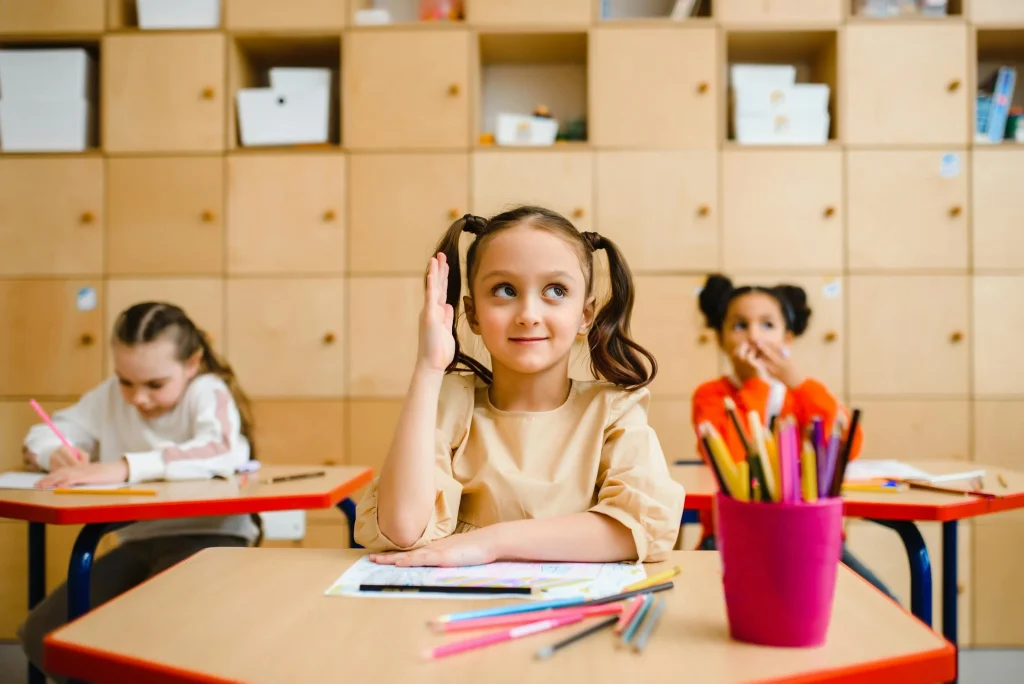
2nd-grade math help – tip #6: Practice patterns and sequences
If you see your kid struggling with patterns and sequences (which is quite a common struggle in 2nd-grade kiddos), try to create patterns with beads or colored objects and ask them to predict the next sequence. You may also use songs or rhymes to teach skip counting (e.g., by 2s, 5s, or 10s) if your kid likes music.
2nd-grade math help – tip #7: Focus on problem-solving skills
Problem-solving is one of the most important math skills for 2nd grade. They have to learn how to identify key information in word problems. In this case, you have to use simple, relatable examples to practice reasoning and critical thinking.
2nd-grade math help – tip #8: Use technology
Tablets, phones, and computers can be a great resource for elementary school kids if used correctly. Use age-appropriate math apps and games to reinforce math skills learned in class.
2nd-grade math help – tip #9: Review basics
Foundational second grade math concepts like number sense, addition, subtraction, and place value must be reviewed regularly if your kid doesn’t feel comfortable using them in word problems. Provide plenty of practice using both written and verbal exercises.
2nd-grade math help – tip #10: Stay positive and patient
Feeling frustrated or exhausted from math is normal both for you and your little one. Taking breaks and adjusting teaching styles based on the child’s needs is important. Note that you have to keep sessions short and engaging to match your kid’s attention span.
What math is taught in 2nd grade?
If you can’t stop looking for ‘what do 2nd graders learn in math,’ here’s an overview of what math is taught in 2nd grade.
- Addition and subtraction (facts to 20; two- and three-digit numbers; word problems).
- Place value (understanding numbers in terms of hundreds, tens, and ones; reading and writing numbers up to 1,000; comparing and ordering numbers using >, <, =.)
- Measurement and data (length; time; money; graphs).
- Geometry (understanding 2D and 3D shapes like circles, triangles, rectangles, squares and spheres, cubes, and cones; understanding the basics of symmetry; breaking shapes into equal parts).
- Multiplication and division foundations (concepts of grouping and repeated addition).
- Simple fractions
- Patterns and relationships (understanding even and odd numbers and identifying patterns)
- Problem solving and critical thinking (breaking problems into small pieces; identifying steps to solving a problem).
In 2nd grade math, kids focus on building foundational skills that will help them introduce new concepts in later years. 2nd-grade math must prepare students for more complex math problems, giving them the necessary foundation to confidently tackle concepts like multiplication, division, fractions, and problem-solving strategies as they progress through their education.
How to help my 2nd grader with math? Conclusion
To sum it all up, if you want to help your children get the perfect 2nd-grade skills and apply the theory and knowledge that will be useful further, you have to have the right resources and strategies at hand that will help your kid conquer math.
2nd graders begin to learn key math concepts and skills that will serve as the basis for their future math knowledge, and non-formal education tools can help you reinforce 2nd-grade skills with ease. Online math tutoring platforms like Brighterly are perfect places where tutors work individually with students of different ages and teach them using new and cutting-edge teaching methods. Brighterly tutors are here to help your little one as they focus on important second grade math topics that are fully aligned with the US Common Core.
Ready to try? Book a free demo lesson where our tutor determines your kid’s level of knowledge, analyzes it, and recommends practices that can improve the situation! Help them become better math students with Brighterly!

